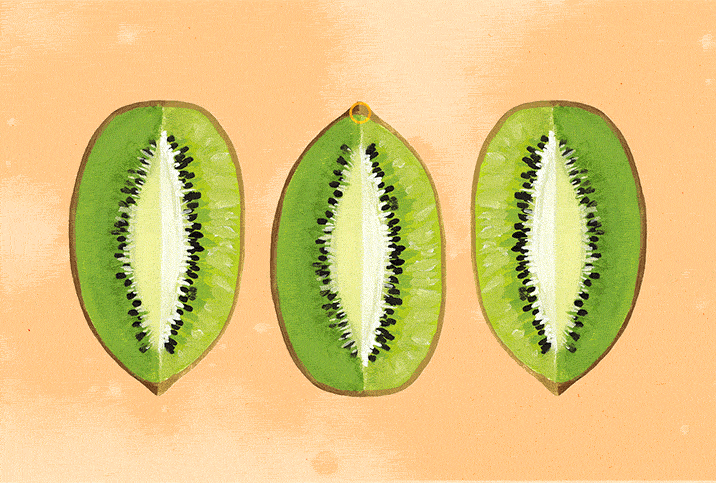Your Vaginal Pain Might Be Clitoral Adhesion

When the word "phimosis" comes up, people usually think of something to do with the penis. The definition of phimosis is the foreskin of an uncircumcised penis being unable to be pulled back or retracted. In men with phimosis, the tip of the penis may look as if rings of folded skin encircle it.
Believe it or not, clitoral adhesion can cause pain in females, too.
Clitoral phimosis in a female
Clitoral phimosis is an anatomical disorder where the hood of skin around a female's clitoris is fully or partially disabled. Essentially, the clitoral hood is too tight, or the patient was born without an opening where the glans of the clitoris can protrude for sexual stimulation.
The condition is seldom reported and heavily misunderstood, despite pain in the clitoris being a symptom.
First things first: There is a need to distinguish the types of adhesion of the clitoris, according to Greg J. Marchand, M.D., a board-certified OB-GYN in Mesa, Arizona.
"If we're talking about women who truly have a clitoral hood that is so tight that any enlargement of the glans clitoris or simple motion of the area causes pain, then we are talking extremely rare. This would likely be less than one in a million. I have never seen one and I have examined thousands of women for sexual health-related issues," Marchand said.
However, Marchand added, if the definition is softened to include all women who might have sexual dysfunction because the position or tightness of the clitoral hood is less than optimal, then the condition is more prevalent. A 2002 study suggested that 22 percent of women suffer from phimosis of the clitoris.
Causes and symptoms of clitoral adhesion
Clitoral phimosis can be congenital or acquired. For the most part, however, the condition is acquired by various sources, including the following:
- Chronic inflammatory dermatosis. A disorder that affects the vulvar area—including the clitoris—where the skin is irritated, inflamed and painful to the touch.
- Lichen sclerosus (LS). A rare disorder characterized by smooth white patches on the skin of the genito-anal area. It may cause the formation of blisters within the affected area, as well as pain, itching and bleeding.
- Postmenopausal vulvar atrophy. Lower levels of estrogen can cause vulva tissue to become thinner and drier than before menopause.
- Obstetrical trauma. Trauma can occur from natural childbirth, complications thereof or the adverse impact of surgical procedures.
Nearly a quarter of women with the condition have adhesions, but the severity of the adhesion does not correspond to the severity of symptoms, according to Philadelphia-based sexual medicine nurse practitioner Andrea Martin, D.N.P.
The condition's symptoms tend to depend on what caused it in the first place.
Obstetrical trauma causes vulvar scarring, nerve damage and a loss of sensation within the area, including the clitoris. Postmenopausal vulvovaginal atrophy results in constrictions and stenosis (narrowing and shortening of the vaginal canal), leading to compromised clitoral function.
Chronic inflammatory dermatosis may include any of the following symptoms, depending on the organism causing the condition:
- Lichen sclerosus. Inflammation and thinning of epithelial tissues.
- Lichen planus. Itching, burning, pain, dyspareunia, scarring of the clitoral prepuce and glans clitoris.
- Hidradenitis suppurativa. Infected pubic hair follicles, formation of multiple abscesses and extensive scarring.
How is phimosis of the clitoris diagnosed?
A proper diagnosis of clitoral phimosis was unheard of until the beginning of the current century. Before then, most women suffering from the condition were off the medical radar.
"Clitoral adhesions or phimosis are diagnosed with a simple physical exam by looking at the clitoral hood and gently attempting to expose the glans," Martin explained. "Unfortunately, most medical providers don't give the clitoris any thought and don't even know how to examine it."
The condition is uncommon, said Sarah Yamaguchi, M.D., a board-certified OB-GYN based in Los Angeles. It's not very prevalent in the general population but is much more common among women with sexual dysfunction, she added.
Many women diagnosed with the condition are between the ages of 40 and 60. Experts believe the hormonal imbalance experienced during the menopausal transition is one of the reasons women in that stage are more prone to clitoral issues. It also does not help that these are the years in which common conditions such as vaginal dryness and atrophy lead to additional pain and discomfort.
"It is more common in women with lichen sclerosus and postmenopausal women," Yamaguchi confirmed. "It can also happen in women who have had trauma in the area due to accidents or from female circumcision."
Treating the symptoms of phimosis of the clitoris
In mild cases caused by a skin infection, topical corticosteroids are the first line of treatment for resolving phimosis of the clitoris. These may be supplemented or used in tandem with oral antibiotics to prevent the spread of the infection to other parts of the body and to speed up the healing process. In addition, nonsurgical procedures such as lysis of clitoral adhesions have proved beneficial.
"Lysis of clitoral adhesions is an in-office procedure in which a topical numbing agent is applied to the clitoris," Martin said. "The clitoral hood is gently stretched, removing smegma and allowing the hood to remove freely without restriction. There is no cutting or suturing involved."
However, more severe infections may lead to irreversible scarring and require surgery, so it's important to speak to your doctor right away if you're experiencing clitoral pain or sexual dysfunction.


















